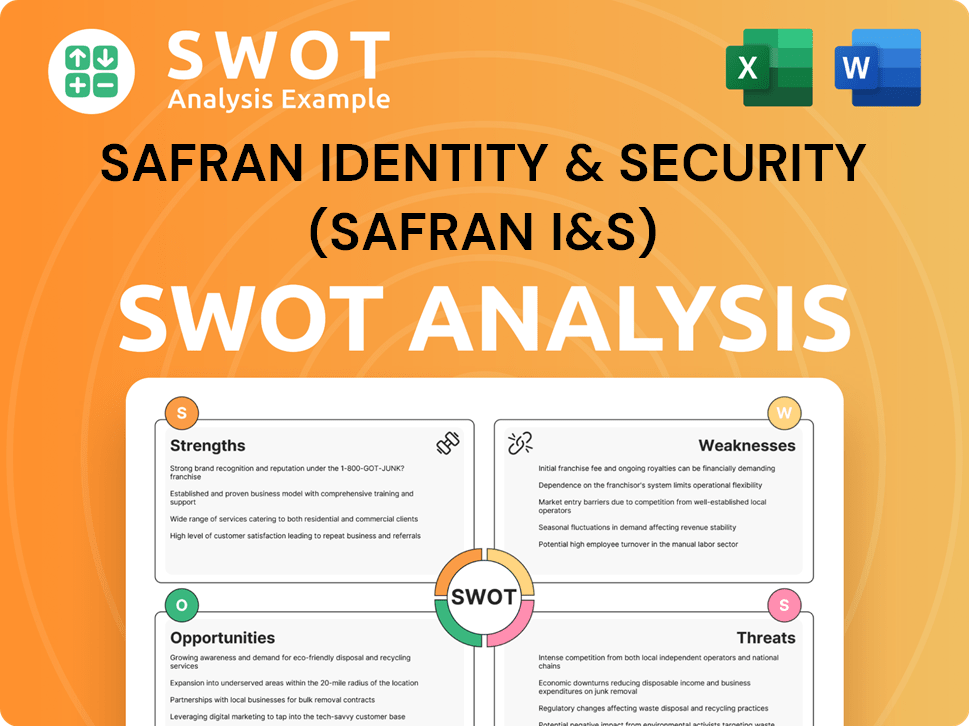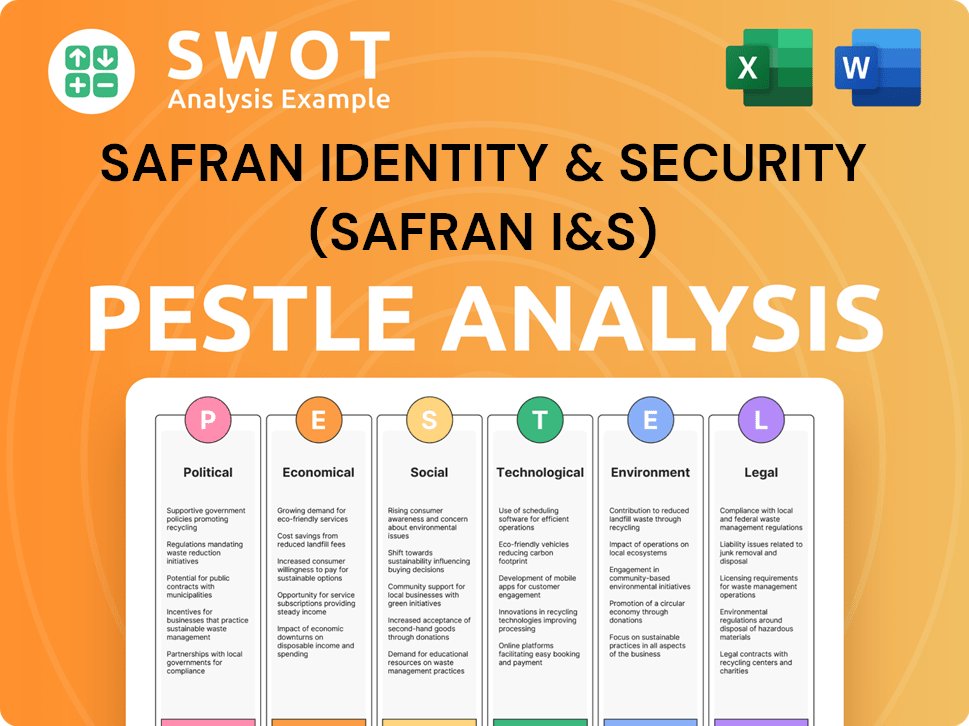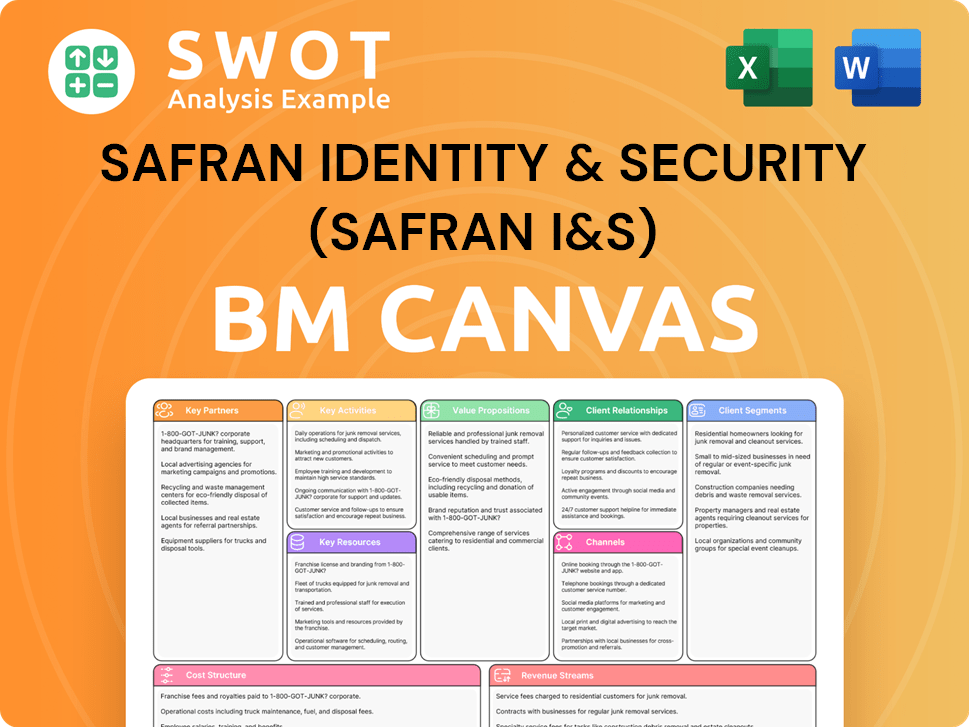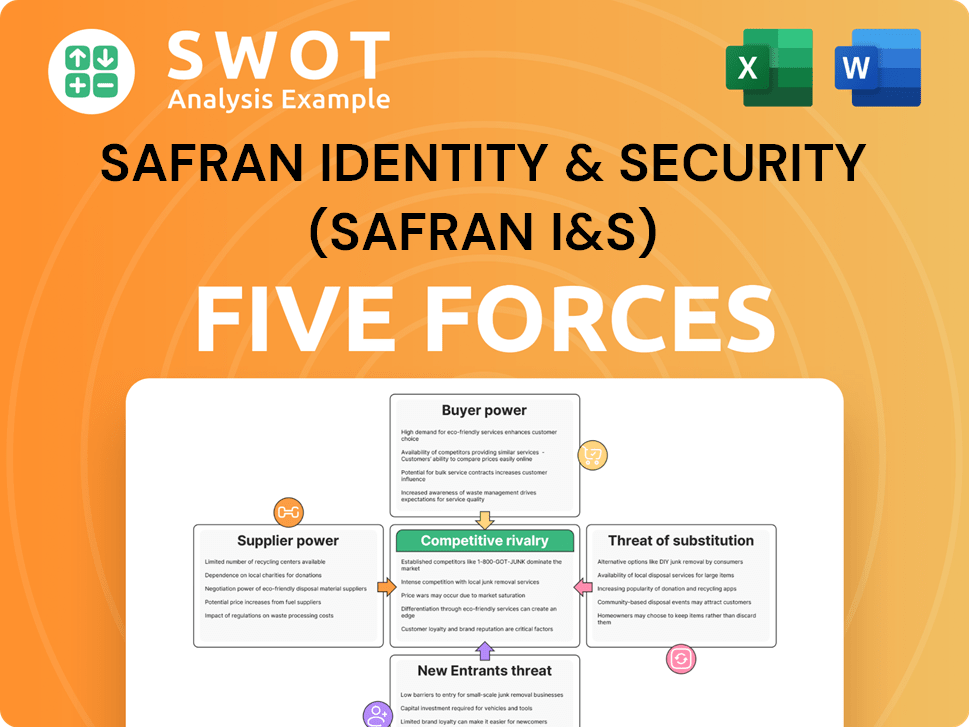Safran Identity & Security (Safran I&S) Bundle
How did Safran Identity & Security Shape the World of Digital Identity?
In a world increasingly reliant on secure digital interactions, understanding the evolution of identity and security solutions is crucial. Safran Identity & Security (Safran I&S) SWOT Analysis, now known as Morpho, has been at the forefront of this transformation, specializing in biometrics and digital identity. This company's journey offers valuable insights into the challenges and innovations that have shaped the modern security landscape.

This exploration into the brief history of Safran Identity & Security will uncover its pivotal role in the development of biometric technology and digital identity solutions. From its early days, Safran I&S has consistently innovated, providing critical services to governments and businesses globally. Understanding the company's evolution reveals the strategic foresight and technological advancements that have solidified its position in the market.
What is the Safran Identity & Security (Safran I&S) Founding Story?
The genesis of what is now known as Safran Identity & Security (Safran I&S) is intertwined with the escalating need for secure identification technologies. The company's roots are complex, evolving through mergers and acquisitions within the larger Safran group. However, the core capabilities that define the current entity, Morpho, trace back to pioneering companies in biometrics and security.
A pivotal predecessor was Sagem, a French company with a rich history in electronics and defense. Sagem developed expertise in fingerprint recognition and other security technologies, laying the groundwork for future innovations. The initial focus was on addressing the increasing demand for reliable identity solutions in a world facing growing security threats and the rise of digital transactions.
The original business model centered on developing and deploying advanced biometric systems and secure document technologies. Early offerings likely included automated fingerprint identification systems (AFIS) for law enforcement and secure document personalization for government agencies. The expertise of the founding teams, often comprising engineers and scientists with backgrounds in optics, electronics, and algorithms, was crucial in pursuing these ventures. The cultural and economic context of the late 20th and early 21st centuries, marked by globalization and the imperative for enhanced security post-9/11, significantly influenced the company's creation and subsequent growth.
The evolution of Safran I&S reflects the broader trends in digital identity and security.
- Early focus on biometrics, including fingerprint recognition, for law enforcement and government applications.
- Expansion into secure document personalization and identity solutions.
- Strategic acquisitions and mergers within the Safran group to enhance capabilities.
- Adaptation to evolving security threats and the increasing importance of digital identity.
The company's journey has been marked by key milestones, including technological advancements in biometrics and secure document technologies. These advancements have been driven by the need to combat fraud, enhance border security, and facilitate secure digital transactions. The company's evolution is also reflected in its strategic acquisitions and mergers, which have expanded its capabilities and market reach. For example, the acquisition of Morpho by Safran significantly expanded its portfolio. For a deeper dive into the marketing strategies employed by Safran I&S, consider reading this article on the Marketing Strategy of Safran Identity & Security (Safran I&S).
Safran I&S has consistently adapted to the changing landscape of digital identity and security, driven by the imperative to protect against evolving threats. The company's focus on innovation and strategic acquisitions has positioned it as a key player in the global security market. In recent years, the company has focused on providing solutions for digital identity, including identity verification and access management. The company's commitment to research and development has enabled it to stay at the forefront of technological advancements in biometrics and security.
Safran Identity & Security (Safran I&S) SWOT Analysis
- Complete SWOT Breakdown
- Fully Customizable
- Editable in Excel & Word
- Professional Formatting
- Investor-Ready Format

What Drove the Early Growth of Safran Identity & Security (Safran I&S)?
The early years of Safran Identity & Security (Safran I&S), and its predecessors, were marked by significant technological advancements and strategic market penetration. Key to this phase was the refinement of biometric algorithms, which improved the accuracy and speed of identification systems. Initial product offerings were often geared toward government contracts, focusing on national ID programs and border control solutions. This period set the stage for the company's expansion and diversification within the broader security landscape.
Early growth was fueled by breakthroughs in biometrics. These advancements led to more reliable and efficient identification systems. The focus was on enhancing the accuracy and speed of identity verification processes, which was crucial for early market adoption.
Initial market entry focused on government contracts, particularly for national ID programs and border control. These early contracts provided a solid foundation for subsequent expansion. By securing these contracts, the company established credibility and a strong foothold in the security market.
The company extended its reach to law enforcement agencies and commercial enterprises. This diversification allowed Safran I&S to tap into new revenue streams. The expansion into new sectors demonstrated the versatility of its security solutions.
International markets were a key focus, with the company establishing a global presence. This strategy was essential to meet the worldwide demand for security solutions. Expanding internationally allowed Safran to capitalize on global growth opportunities.
Safran Identity & Security (Safran I&S) PESTLE Analysis
- Covers All 6 PESTLE Categories
- No Research Needed – Save Hours of Work
- Built by Experts, Trusted by Consultants
- Instant Download, Ready to Use
- 100% Editable, Fully Customizable

What are the key Milestones in Safran Identity & Security (Safran I&S) history?
The Company History of Safran Identity & Security (Safran I&S), later known as Morpho, is marked by significant milestones in the field of digital identity and biometrics. These achievements reflect the company's evolution and its impact on global security solutions.
| Year | Milestone |
|---|---|
| Early 2000s | Development of advanced biometric systems, including multimodal biometrics integrating fingerprints, facial recognition, and iris scans. |
| Mid-2000s | Securing numerous patents for biometric algorithms and secure document technologies. |
| 2010s | Major partnerships with governments worldwide for national identity programs and e-passport solutions, including involvement in India's Aadhaar program. |
| 2017 | Rebranding from Safran Identity & Security to Morpho. |
| Ongoing | Continuous investment in research and development, strategic acquisitions, and adaptation to evolving regulatory landscapes. |
Safran I&S significantly contributed to advancements in Biometrics, providing highly accurate and reliable identification systems. The company's innovations include multimodal biometric solutions and secure document technologies, which have been implemented globally.
Development of systems combining fingerprints, facial recognition, and iris scans for enhanced accuracy.
Creation of advanced technologies for secure passports, ID cards, and other official documents.
Development of sophisticated algorithms to improve the accuracy and reliability of biometric identification.
Implementation of e-passport solutions with embedded security features to combat fraud.
Creation of platforms for secure Digital Identity management, essential for modern security needs.
Implementation of robust data encryption methods to protect sensitive biometric information.
Safran I&S has faced challenges including market competition and adapting to evolving regulations. The company's ability to navigate these hurdles has been crucial for its sustained presence in the market. For a deeper understanding of the competitive landscape, consider exploring the Competitors Landscape of Safran Identity & Security (Safran I&S).
Intense competition from both established players and agile startups in the security technology market.
Adapting to and complying with evolving regulations concerning data privacy and biometric data usage, such as GDPR and CCPA.
Navigating global supply chain disruptions and geopolitical tensions that can impact the deployment of large-scale security projects.
Keeping pace with rapid technological shifts and the need for continuous innovation in biometrics and security solutions.
Learning from occasional product failures to improve iteratively and make strategic pivots as needed.
Addressing the impact of geopolitical tensions on the deployment and operation of security projects worldwide.
Safran Identity & Security (Safran I&S) Business Model Canvas
- Complete 9-Block Business Model Canvas
- Effortlessly Communicate Your Business Strategy
- Investor-Ready BMC Format
- 100% Editable and Customizable
- Clear and Structured Layout

What is the Timeline of Key Events for Safran Identity & Security (Safran I&S)?
The story of Safran Identity & Security (Safran I&S), now known as Morpho, is a journey of innovation and strategic shifts. From its roots in biometric technology to its current focus on digital identity solutions, the company has consistently adapted to the evolving security landscape. Key moments include advancements in fingerprint and facial recognition, significant government contracts, and the integration of smart card technology. These milestones demonstrate Safran's commitment to secure identity solutions.
| Year | Key Event |
|---|---|
| Late 20th Century | Foundation laid through predecessors' work in biometrics and secure documents. |
| Early 2000s | Consolidation under the Safran group. |
| Mid 2000s | Development of early fingerprint recognition technologies and major government contracts. |
| Late 2000s | Integration of smart card technologies and introduction of advanced facial and iris recognition systems. |
| 2010s | Strategic acquisitions expanding global footprint and technological capabilities. |
| 2024 | IDEMIA (which Morpho became part of) announced new partnerships and product launches aimed at enhancing digital identity and secure payment solutions. |
The demand for digital identity solutions is increasing, driven by secure online transactions and citizen services. Safran I&S, now Morpho, is well-positioned to capitalize on this trend. The company is likely to expand its cloud-based identity verification services.
Morpho is expected to integrate AI and machine learning to enhance the accuracy and efficiency of its biometric systems. This will help strengthen its position in the biometrics market. This advancement ensures the company stays at the forefront of technological innovation.
Morpho will likely continue expanding into new geographical markets, especially in emerging economies. These regions are experiencing rapid digital transformation. This strategic move will increase the company's global reach and revenue.
The global biometrics market is projected to grow with a compound annual growth rate (CAGR) of over 15% through 2025. This growth is driven by adoption in government, enterprise, and consumer sectors. Safran I&S's focus on biometrics will align with this trend.
Safran Identity & Security (Safran I&S) Porter's Five Forces Analysis
- Covers All 5 Competitive Forces in Detail
- Structured for Consultants, Students, and Founders
- 100% Editable in Microsoft Word & Excel
- Instant Digital Download – Use Immediately
- Compatible with Mac & PC – Fully Unlocked

Related Blogs
- What is Competitive Landscape of Safran Identity & Security (Safran I&S) Company?
- What is Growth Strategy and Future Prospects of Safran Identity & Security (Safran I&S) Company?
- How Does Safran Identity & Security (Safran I&S) Company Work?
- What is Sales and Marketing Strategy of Safran Identity & Security (Safran I&S) Company?
- What is Brief History of Safran Identity & Security (Safran I&S) Company?
- Who Owns Safran Identity & Security (Safran I&S) Company?
- What is Customer Demographics and Target Market of Safran Identity & Security (Safran I&S) Company?
Disclaimer
All information, articles, and product details provided on this website are for general informational and educational purposes only. We do not claim any ownership over, nor do we intend to infringe upon, any trademarks, copyrights, logos, brand names, or other intellectual property mentioned or depicted on this site. Such intellectual property remains the property of its respective owners, and any references here are made solely for identification or informational purposes, without implying any affiliation, endorsement, or partnership.
We make no representations or warranties, express or implied, regarding the accuracy, completeness, or suitability of any content or products presented. Nothing on this website should be construed as legal, tax, investment, financial, medical, or other professional advice. In addition, no part of this site—including articles or product references—constitutes a solicitation, recommendation, endorsement, advertisement, or offer to buy or sell any securities, franchises, or other financial instruments, particularly in jurisdictions where such activity would be unlawful.
All content is of a general nature and may not address the specific circumstances of any individual or entity. It is not a substitute for professional advice or services. Any actions you take based on the information provided here are strictly at your own risk. You accept full responsibility for any decisions or outcomes arising from your use of this website and agree to release us from any liability in connection with your use of, or reliance upon, the content or products found herein.